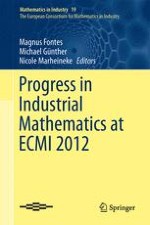2014 | OriginalPaper | Buchkapitel
Simulation of a Rubber Beam Interacting with a Two-Phase Flow in a Rolling Tank
verfasst von : Erik Svenning, Andreas Mark, Fredrik Edelvik
Erschienen in: Progress in Industrial Mathematics at ECMI 2012
Aktivieren Sie unsere intelligente Suche, um passende Fachinhalte oder Patente zu finden.
Wählen Sie Textabschnitte aus um mit Künstlicher Intelligenz passenden Patente zu finden. powered by
Markieren Sie Textabschnitte, um KI-gestützt weitere passende Inhalte zu finden. powered by
